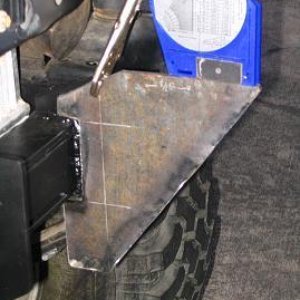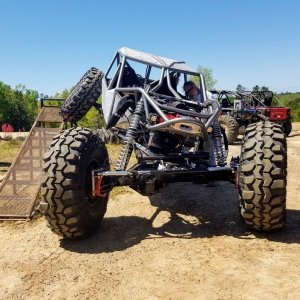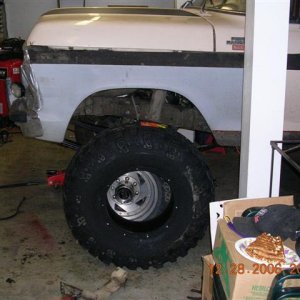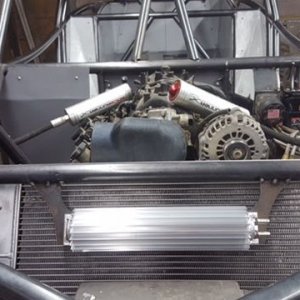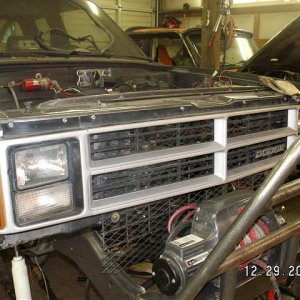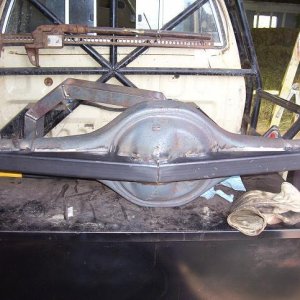84Toyota4x4
Well-Known Member
Ok, so Im a complete newbie with Holley carbs, but Im far from incompetent I would hope, haha.
I have a Holley 4160 (I believe) which has a vacuum secondary system that isnt working. I verified this twice by using both the bread tie and the paperclip tests (putting each on the vacuum pot shaft and driving full throttle through 3 gears), there was no movement at all.
I pulled the secondary vacuum pot and discovered the diaphragm was leaking (compressed shaft, held port covered), so I took it to Jim Greens and they got me a new one. They also got me new metering block and bowl gaskets about a week earlier as the carb had the wrong ones on it. I also picked up a yellow secondary spring (very light) while I was there. I blew some light compressed air into the vacuum port, and air comes out the hole under the butterfly in the primary venturi, so its not clogged. I read about a hole possibly in the secondary venturi also, but I didnt see/hear one?
I got home, installed it all, and repeated the test. No movement still. I pulled the whole thing back off, put a new o-ring between the carb body and the secondary vacuum pot, reinstalled it all, still no movement. With the engine off and the throttle held wide open, the secondary linkage and butterflies move freely and easily, no binding at all.
Ideas? The carb is sitting on a Mazda rotary engine, so its not a typical application, but I figure there are enough people here with some experience that it might be a "common problem" and not necessarily "application specific". Here is a link to the carb kit (which was bought used):
http://www.racingbeat.com/Mazda-Performance-Parts.html?PartNumber=18034
It also has these float bowls:
http://www.racingbeat.com/Mazda-Performance-Parts.html?PartNumber=16641
Im running a Holley blue pump and regulator, fuel is set to 6 PSI, float levels are correct. As I said, the carb was bought used, so its possible someone mucked with something, but it seems like a fairly simple system, and I dont get why it wont open the secondaries...
Thanks in advance!
~T.J.
I have a Holley 4160 (I believe) which has a vacuum secondary system that isnt working. I verified this twice by using both the bread tie and the paperclip tests (putting each on the vacuum pot shaft and driving full throttle through 3 gears), there was no movement at all.
I pulled the secondary vacuum pot and discovered the diaphragm was leaking (compressed shaft, held port covered), so I took it to Jim Greens and they got me a new one. They also got me new metering block and bowl gaskets about a week earlier as the carb had the wrong ones on it. I also picked up a yellow secondary spring (very light) while I was there. I blew some light compressed air into the vacuum port, and air comes out the hole under the butterfly in the primary venturi, so its not clogged. I read about a hole possibly in the secondary venturi also, but I didnt see/hear one?
I got home, installed it all, and repeated the test. No movement still. I pulled the whole thing back off, put a new o-ring between the carb body and the secondary vacuum pot, reinstalled it all, still no movement. With the engine off and the throttle held wide open, the secondary linkage and butterflies move freely and easily, no binding at all.
Ideas? The carb is sitting on a Mazda rotary engine, so its not a typical application, but I figure there are enough people here with some experience that it might be a "common problem" and not necessarily "application specific". Here is a link to the carb kit (which was bought used):
http://www.racingbeat.com/Mazda-Performance-Parts.html?PartNumber=18034
It also has these float bowls:
http://www.racingbeat.com/Mazda-Performance-Parts.html?PartNumber=16641
Im running a Holley blue pump and regulator, fuel is set to 6 PSI, float levels are correct. As I said, the carb was bought used, so its possible someone mucked with something, but it seems like a fairly simple system, and I dont get why it wont open the secondaries...
Thanks in advance!
~T.J.

